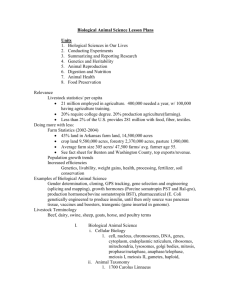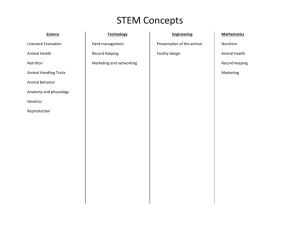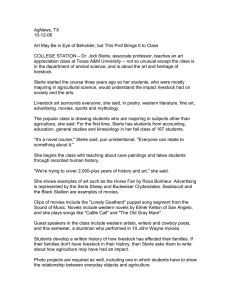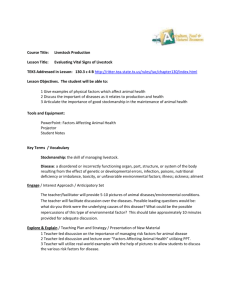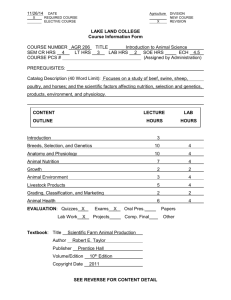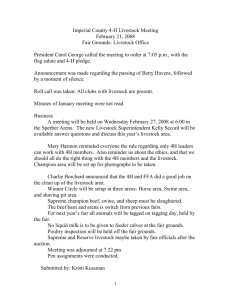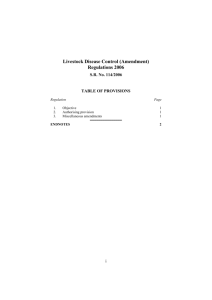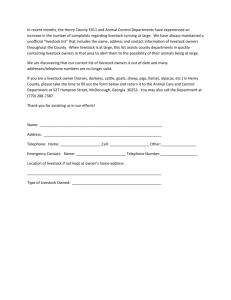Improvement through Selection Day 2
advertisement
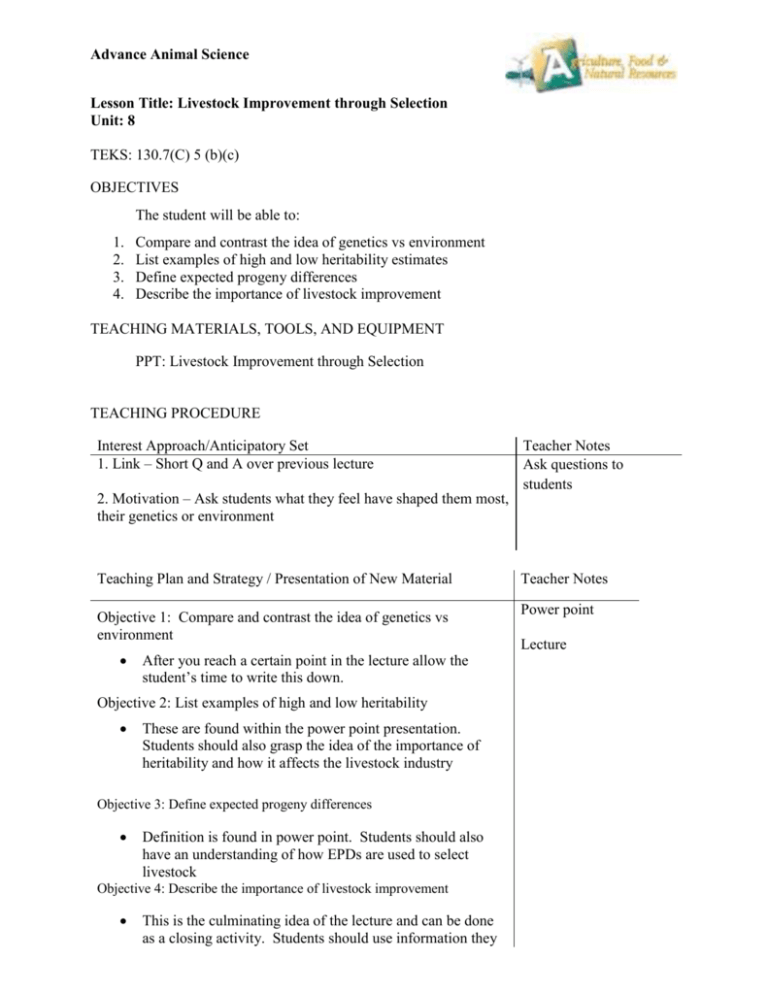
Advance Animal Science Lesson Title: Livestock Improvement through Selection Unit: 8 TEKS: 130.7(C) 5 (b)(c) OBJECTIVES The student will be able to: 1. 2. 3. 4. Compare and contrast the idea of genetics vs environment List examples of high and low heritability estimates Define expected progeny differences Describe the importance of livestock improvement TEACHING MATERIALS, TOOLS, AND EQUIPMENT PPT: Livestock Improvement through Selection TEACHING PROCEDURE Interest Approach/Anticipatory Set 1. Link – Short Q and A over previous lecture 2. Motivation – Ask students what they feel have shaped them most, their genetics or environment Teacher Notes Ask questions to students Teaching Plan and Strategy / Presentation of New Material Teacher Notes Objective 1: Compare and contrast the idea of genetics vs environment Power point After you reach a certain point in the lecture allow the student’s time to write this down. Objective 2: List examples of high and low heritability These are found within the power point presentation. Students should also grasp the idea of the importance of heritability and how it affects the livestock industry Objective 3: Define expected progeny differences Definition is found in power point. Students should also have an understanding of how EPDs are used to select livestock Objective 4: Describe the importance of livestock improvement This is the culminating idea of the lecture and can be done as a closing activity. Students should use information they Lecture Advance Animal Science have heard and written down during this lecture. ENGAGEMENT During portions of the lecture students should be writing things down to turn in at the end of the day for a day grade. EVALUATION Use the things written during and after the lecture to evaluate the understanding of the students ADDITIONAL MATERIALS Livestock and Carcasses by Donald L. Boggs, Robert A Merkel, and Matthew E. Doumit. College & Career Readiness Standards: II.C.1; II.E.7 (Write in the number/letters already crosswalked for your unit) ©Texas Education Agency, 2011
